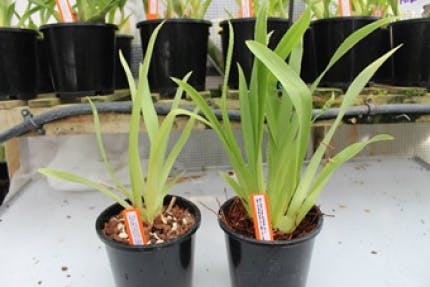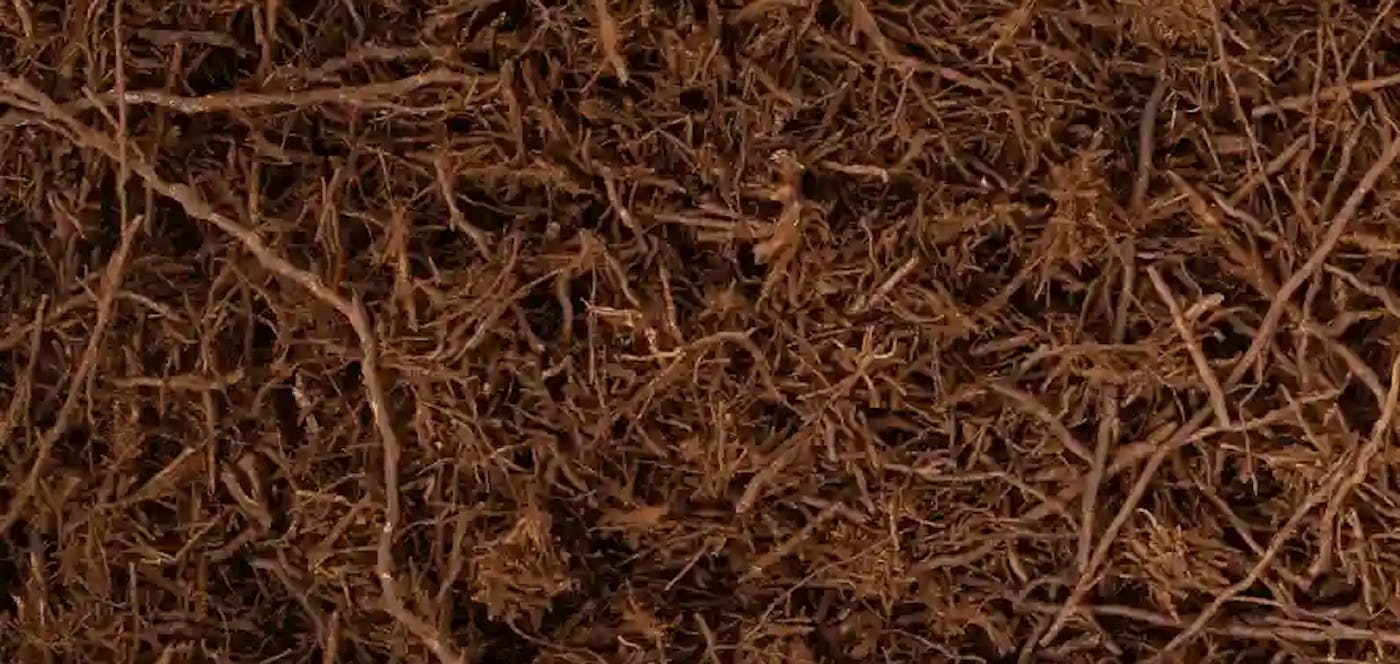
Miltoniopsis Rene Komoda ‘Pacific Cloud’
First Checkpoint – 4 months
Both plants potted on the same day. At four months there was already a noticeable difference between plants in Fernwood tree fern fiber and those in the bark-pumice mix. The plant on the left is in a 3-part bark, 1-part pumice mix. The plant on the right is potted in 100% Fernwood tree fern fiber. The plant in tree fern appeared to be darker and healthier. The plant was better developed having more growths and denser foliage. This was consistent across all 15 pairs.














